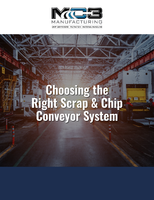5 Tips for Finding the Right Fluid Bed System
Purchasing a new fluid bed system isn't easy. Fluid bed systems are expensive, complex, and require a great deal of careful consideration and research before buying. Ordering a machine that can't meet your process requirements could end up costing much more than anticipated, and there's no single system available that will suit everyone's needs. So, where should you start?
1. Determine your short-term and long-term processing goals.
What are you looking to get out of a new system? There are a lot of options available, but knowing exactly what you want is sure to narrow the field a bit. Take the time to figure out which functions and features are absolutely necessary for your process right now, and go from there.
Considering the costs involved, it's highly likely that it may be many years before your company can once again justify the cost of a new system. Bear in mind that the goals for your present business or research may change unexpectedly in the future. Decide what your long-term goals are, and invest accordingly.
2. Decide if a new system is right for you. Although the idea of a shiny new system can be appealing, in many cases, it may not be necessary. Those considering the purchase of a new machine to replace an older fluid bed system should not overlook the range of cost-effective alternatives that are available. Retrofitting an existing system to add new functionality, replacing worn components or upgrading outdated technology may be all that is required to make an old machine feel brand new.
For more information about upgrading and retrofit options, click here to read "Four Ways to Update Your Fluid Bed System (Without Replacing It!)"
3. Choose versatile systems capable of accommodating multiple applications. Some fluid bed systems offer multiple functions- like fluid bed drying, granulating and Wurster coating- in a single system. Even if you don't require the extra functionality right now, in the long run, this will save you from spending considerable money on the purchase of a second or third machine to perform additional applications.
4. Look for special features designed to speed up your process.
Conical expansion chambers
The conical shape can cut the velocity of the air in the filter chamber by up to 50%. This keeps fine particles suspended below the spray nozzles, reducing the time necessary for fluid bed granulation.
Agitator systems
Located in the bottom of the bowl, agitator systems rotate through the material in bowl bed to eliminate "dead spots" and ensure proper fluidization. This saves the operator from having to shut down the process and manually shovel or rake the bottom of the bowl bed.
Liquid-delivery manifolds
Round "chandelier" liquid-delivery manifolds, mounted above the bowl, allow granulation to be adjusted without interrupting the process. Carefully positioned to ensure uniform distribution of the binder solution, the manifold's top-spray granulation nozzles point down toward the bed surface, allowing users to deliver a greater volume of solution per minute without fears of over-wetting certain areas due to overlapping of the spray.
5. Work with experts to be sure that your machine is the right one for your requirements.
Few manufacturers have the capability to expand upon their standard "off-the-shelf" product lines, which are often designed to perform only the most common types of processing applications. For customers with very specialized applications or unusual requirements, this can make it very difficult to find the right machine. Look for suppliers who are willing to modify, redesign or completely customize their systems to meet your needs.




